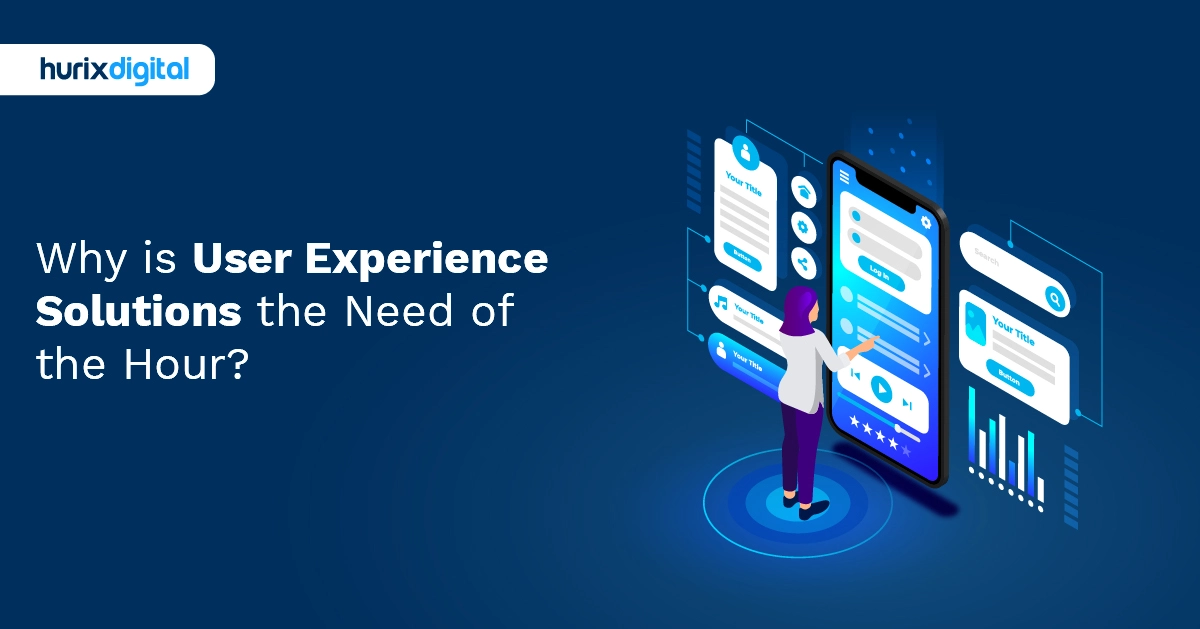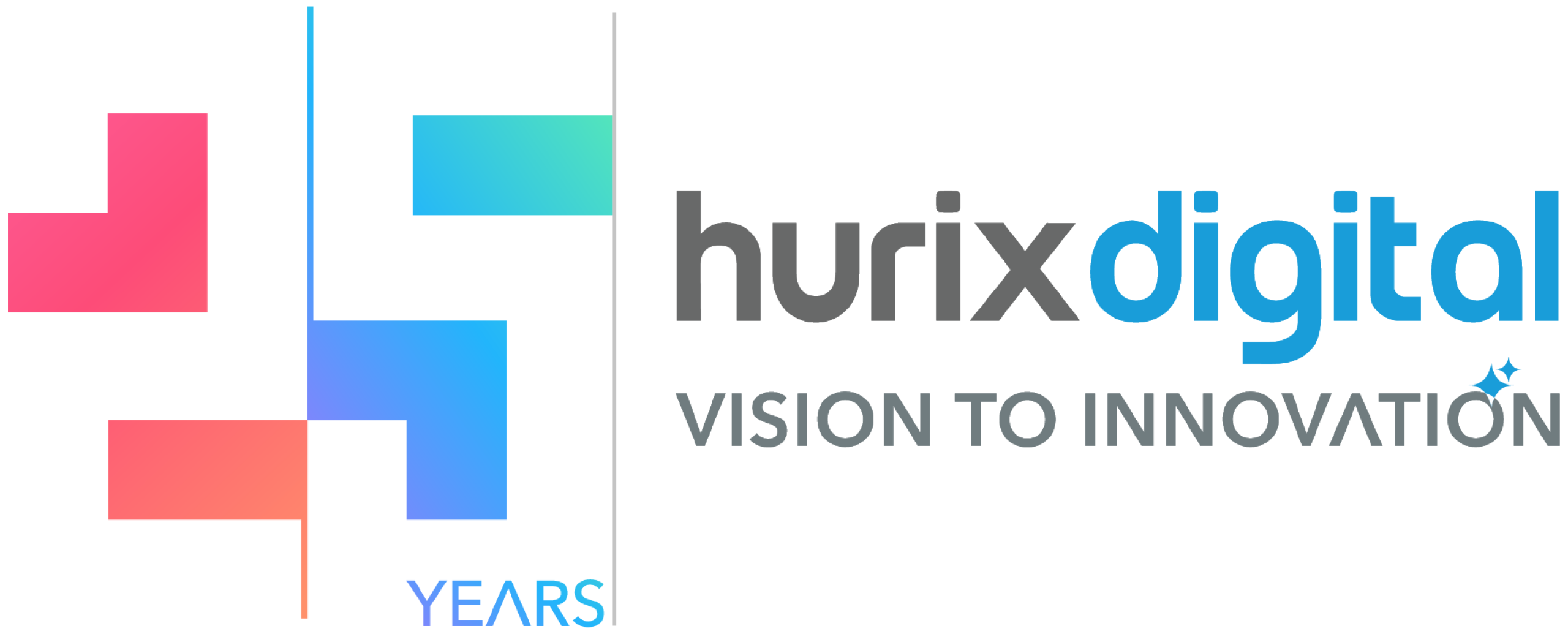
Why is User Experience Solutions the Need of the Hour?
For a long time, the idea of user experience was strange for business leaders: recognized, but sometimes treated as just a nice-to-have feature and not as the central pillar. In reality, there was a kind of quiet suspicion about how to actually weigh its effect, how to incorporate its demands into the everyday work of an agile team, or even how to position it strategically against other, more pressing issues. It was, for some, like dealing with a foggy, artistic domain, as opposed to being a business driver that can be measured.
However, this view is rapidly turning into an old-fashioned idea, with a new perspective that the very existence and development of a company are dependent on providing just efficient user interactions. The move, though, comes with its own difficult questions. How can one person go beyond just talking about it and actually create a solid UX culture, one that attracts and keeps the smartest people? What if AI completely changes the way of communicate? And most importantly, after all this hard work is done, how is a leader capable of proving the upgrade of user experience to be a return on investment with absolute clarity?
This blog is the answer to all these questions and will give a deeper insight into user experience solutions.
Table of Contents:
- What Defines Effective User Experience Solutions for Businesses?
- How to Measure ROI from User Experience Solutions Effectively?
- Overcoming Common Pitfalls in Implementing User Experience Solutions
- Integrating User Experience Solutions into Agile Development Workflows
- Scaling User Experience Solutions Across a Growing Enterprise
- Building a Robust UX Culture: Key Strategies for Leadership
- Prioritizing User Experience Solutions Against Competing Business Objectives
- Adapting User Experience Solutions for AI and Emerging Technologies
- Attracting and Retaining Top UX Talent
- What is the Strategic Long-Term Value of User Experience Solutions?
- Conclusion
What Defines Effective User Experience Solutions for Businesses?
Good user experience (UX) does not revolve around glitter and glamour or the latest design trends. It is believed that good UX is just a modern thing. Practical designers understand that the real UX has to do with simple and nearly invisible engagement in practice.
When you are busy with a task such as booking a flight, you hardly notice the site’s animations. The goal is to locate the flight, check the information, and occupy a seat without any difficulties. Good UX will allow you to do this nearly without even seeing the interface. It is harmonized with the background and smooth.
Businesses measure these outcomes. Were users able to complete their purchase quickly, and did they not leave their cart? Did they locate the information they required without calling support? Were they sent back, not because they needed to be sent back? These are real metrics. They increase conversion, reduce support costs, and create true loyalty.
Hitting these targets requires empathy and an in-depth understanding of what users need, not what they say, but how they behave. Sometimes, a good design can open obstacles simultaneously. The era of UX is a continuous reinvention process since not many products are perfect. Experts reduce friction, demystify the directions, and continue to resolve actual issues that can lead to business objectives. It is in this process that value is created.
How to Measure ROI from User Experience Solutions Effectively?
Typically, someone is searching for a simple, neat little formula or a magic equation that would help them measure the revenue on investment of a user experience improvement. Indeed, that is rarely the case. It’s way beyond just one line on the profit and loss statement.
Initially, he will most likely spot the conversion rates as the obvious point to analyze. For example, if a complex checkout process is simplified, and thereby, more people finish their purchases, then that is a direct, measurable revenue generator. Thus, it’s a good place to start and the lowest-hanging fruit. However, it is just the beginning of the new tale.
Think about the less obvious but just as impactful benefits. When a website or an application turns out to be user-friendly, then what happens to the customer support calls? They drop. Consequently, the smaller number of frustrated users who need to call the support staff means that the time used by the support team in attending to them decreases, and this, in turn, leads to a decrease in operational costs.
The user retention aspect is next, which is as subtle as it is powerful. If an experience is nice, users do not leave. They come back. They spread the word. How can advocacy be tracked in dollars? Quite difficult. You can, of course, record customer visits to the site or establish customer losses. The truth is, however, that it’s all about the lifetime value of the customer. One good experience of a customer is not just about the current transaction; it shows commitment. He would most likely say that if someone actually likes and gets the most out of using your product, then they would be unlikely to switch to a rival offering a similar product at a lower price. That long-term loyalty, though still hard to differentiate from other factors, is a great one.
At times, external users are not the reason why ROI is shown. In the first place, consider internal tools. A nicely designed internal system that reduces errors and speeds up workflows for employees may not be a direct cash generator. But if it takes 15 minutes off a daily task for every person in a department, that time saved adds up to hundreds of hours every week. That is efficient use of time. That is productivity. In the end, that, to the extent that it may not be visible on a typical sales report, is still a notable financial gain. It is about moving beyond the direct revenue vision, towards a world of cost savings, increased efficiency, and customer loyalty. This is a broader and more human perspective on value.
Overcoming Common Pitfalls in Implementing User Experience Solutions
The big picture of a user experience may seem crystal-clear in the design stage, but it tends to lose its way. An archetypal, nearly reassuring pitfall appears upfront: the assumption that we are familiar with the user. Teams bring assumptions of needs, workflows, or pain points, and they are often based on successes or inside reasoning. However, a stricter, even uncomfortable, point of view is needed to produce genuine empathy, which results in genuinely useful products.
It is not enough to survey users or ask them a question in a controlled environment. Individuals hardly say what they want or are unhappy about. We must observe them instead. Look at them straining, going around an unwieldy operation, or the slight hesitation before a click.
Those silent moments, the sighs, the muttered frustrations, tell a richer story than any verbal feedback. To overcome this hurdle, we must acknowledge that we do not know and then visit.
The user flow cannot be useful when the engineers do not understand the objective or when technical limitations are not discussed in advance. Effective creation requires co-creation, like introducing engineers, product owners, and support into discovery early to ask questions, contribute, and become partners in user success. This can be a sloppy and slow process initially, but the end result of a more robust and easier-to-use product will save frustration and rework.
Overcoming difficulties requires curiosity, readiness to be mistaken, and respect for the people who make and use the product.
Also Read: Designing for Everyone: Incorporating Accessibility into Modern UX Practices
Integrating User Experience Solutions into Agile Development Workflows
Integrating user experience into agile development is not simply about implementing a new department into the current system. It is a more profound and more natural change. It is more like changing the organization’s blood type than adding an external component. It really is that essential.
In most cases, teams treat UX as a standalone phase, producing a complete design before any code is written. After that, development sprints are launched. What happens in reality? Requirements have changed. Users may do things differently than expected. The carefully designed plan can also very quickly become a team that gets arrogantly left behind. He has witnessed it several times.
The more successful approach is a different mindset as a starting point. Continuous discovery is what it is about. While the development team is working on what they already know, the UX team, or better a cross-functional group with product and even a developer, is on the ground with the next one. They conduct small, targeted experiments. They interview users, watch, draw, prototype, and validate these first ideas. These are not perfect deliverables.
It’s about producing verified learning. Think of it as low-fidelity prototypes, which could be nothing more than paper sketches presented to the users. It’s about failing fast, failing silently.
This ongoing feedback loop then informs the sprint backlog. User stories are not just technical stories adding functionality, but they also include a user-centric narrative. The “why” is as important as the “what.” So, developers don’t merely perform the tasks unthinkingly; they know the user problem their solution is addressing. It induces empathy. The moment a developer gets to watch a user video struggling with a feature he just built, that’s energy. It’s much more effective than reading a report.
On the flip side, it is not a perfect world. Sometimes, the user test may cause havoc in the process. A beloved feature may be required to change or even turn completely in the other direction. This may be an unpleasant shock, especially when deadlines are close. Yet if you accept that feeling and instead look at it as the chance to create something the users will love, then here is where the magic happens.
Scaling User Experience Solutions Across a Growing Enterprise
As an organization expands, it is common to hear that you hire more UX designers. But the real problem is not the headcount. The difficulty lies in having a continuous user experience with new teams, with their different agendas and UX design styles, coming to the company.
A typical technical solution is a design system. It is not a collection of buttons, but a living map that keeps the whole team on track. However, design systems fail in their own way. I recall a time when the same submit button displayed five blues in one product. Each of the five teams in the five regions selected a blue that appeared appropriate to them, resulting in a failure of common ground, not ill will.
Scaling UX is about creating a mutual understanding that the correct decisions are more comfortable than the incorrect ones, not about strict implementation. Tools help, but conversation matters most. Allow teams to argue, dig holes, and come out mutually.
It is the eternal game of central direction and local independence. Excessive centralization kills innovation and reduces designers to pixel-moving zombies. Excessive decentralization re-invents poor-fit buttons. Striking the sweet spot is evasive and unstable at all times, a negotiation, not a deployment. It is actually a human problem that appears technical.
Building a Robust UX Culture: Key Strategies for Leadership
The key to creating a strong UX culture, one that is literally embedded in an organization’s DNA, is not in establishing a new department or recruiting a handful of designers. It is an intense, planned, top-down effort. An appreciative leader realizes that it is not merely a matter of aesthetics or a smooth interface, but it is about knowing people. It is about developing real empathy with the user, and that empathy spreads throughout all teams.
Relentless listening to customers and to the team creating the product is often the first, underestimated step. A UX champion will provide room for unfiltered user feedback, which may be uncomfortable. They inspire engineers, product managers, and sales teams to watch usability sessions. An intelligent ruler will tell them, “Take your seat. Don’t speak. Just watch them struggle.” Such direct experience may be more effective than any slide deck.
The silent integration process involves working UX into the initial discussions prior to coding or marketing. It involves multiple inquiries about what problem we are actually solving on behalf of the user, at least until it becomes second nature. Leaders do not simply accept UX budgets. They defend time for early research, even at the expense of early sprints. Although this is risky in a busy world, the goal is to minimize rework and increase adoption.
And there will be opposition. Others will find in it a slackening of the pace, and still others a dandyism. A real leader knows to do this not with an iron fist, but through consistent storytelling. They discuss the large and small successes when user-oriented decisions made a clear positive difference in outcomes. They describe the failures as well, the instances when users’ lack of understanding led to a high price. It is a long-term game, a constant push and pull, yet to those who are invested, the payoff is that the organization is building with and not at its users.
Prioritizing User Experience Solutions Against Competing Business Objectives
One of the challenges faced in product development and product design is focusing on user experience instead of other business requirements. It is seldom a good or bad choice but rather a compromise, even a battle. Companies normally require speed, an increase in revenue, and a reduction in cost to achieve quarterly goals, which can readily be measured in the short run, P&L. On the other hand, user experience has long-term payoffs that are more difficult to directly quantify, and it generates explicable friction.
Think of the incessant drive to launch a new feature. The pressure builds. Marketing desires something new to discuss. Sales desires an obvious distinction. A team of engineers willing to get it out the door may insist on not putting the project through a careful user testing period, or on a simpler, faster interface that works but may not be as pretty. We may revisit afterwards, they may say, and with the best of intentions. However, later can mean never, or at least, far costlier to repair, when the foundations have been shown to be faulty.
This tension is known in an expert hand. They are aware that the market requires speed. However, they also understand how trust is very thinly sliced, how unfelt churning is, how frustrating it is over the course of time, when the communication is clumsy or inarticulate. The user is the one who leaves the checkout due to one too many clicks, the customer support line being full of avoidable problems, and the brand loyalty leaking like a sieve. They are not instant financial success stories, but they are gouges that get wider and more expensive with time, compared to the costs of being thoughtful in the first place.
So what does one do for users without losing sight of financial realities? It has to do with demonstrating their mutual reliance. An amazing, user-friendly product reduces training expenses, support tickets, and creates word-of-mouth and loyalty. The good outcomes will only be realized in the future and need foresight, knowledge of human behavior, and long-term belief. The aim is to make something that people really like, and that is usually the business strategy that is the best.
Adapting User Experience Solutions for AI and Emerging Technologies
When dealing with AI and other innovative techs, the main problems are changing the device’s interface and handling a totally new kind of interaction. Our work as designers was that of foreseeing user actions and offering the same predictable, concise reactions for many years. One could, e.g., click this and get that. Predictable. But with AI, you are creating a product that learns and thus cannot always be perfectly deterministic.
A smart home assistant exemplifies trust shaping, not just ease of use. If it misinterprets a command, like turning off heat instead of lights, it breaches trust. Design should anticipate confusion, offering explanations for actions or admitting errors. This honesty and transparency turn the AI into a conversational partner, not just a device.
What this means is that we design a lot for non-binary cases. An AI may choose to provide a solution in which it is 70% sure. How are you going to communicate that subtlety without confusing the recipient? Are you going to conceal the doubt completely? Or are you going to disclose it in a way that the human can evaluate it and reach a conclusion based on it? The truth is, there is no straightforward answer to it, and to be quite honest, we are still in the process of clarifying some of it. It is a flux situation, a really interesting one.
Moreover, the designer’s role is not to make a perfect presentation of the parameters of the AI product but rather to create a user-friendly and trustworthy interface that humans can interpret and explain the AI decisions to a user. This is a problem we designers have to solve and a concept that is drastically broadening the way we think about “user experience.”
Attracting and Retaining Top UX Talent
One of the aspects a leader most frequently has to deal with is the question at the top of his or her mind: How do we attract brilliant UX minds, and, more importantly, how do we keep them? Desires of a great career alone will not be enough to get one fully engaged in the company, though competitive compensation is obviously a baseline. Not the real attraction, the hardest to let go of, stays in the less tangible, human-centric aspects of work.
Managers who truly allow their UX teammates to be involved in implementing the strategy, especially in the early stages, help determine how to succeed from the start. They tell these professionals, “It’s your brain that’s important to us. It’s your point of view, not just your wireframing skills.” This shows respect for the individual’s full creative and strategic potential.
Adding to that is the space. Is it an environment where one can risk without monetary loss? Is it possible for someone to come up with a crazy idea, and even if it turns out to be wrong, without being quickly and harshly judged? The best UX people are, by nature, explorers. They want a place where they can extensively check and repeat the process, and yes, occasionally fail in a big way. A leader builds up that sense of psychological safety within the organization by being the one to show it himself and by being the one who supports the whole learning that comes from mistakes.
To a great extent, retention can be seen as a continuation of the attraction discourse. People remain at a place where they feel recognized, where their development is a continuous path. Literally, this involves coaching the team to upgrade their skill sets. Possibly, it refers to true mentorship, an amount of money that can be spent on attending rare conferences, or just setting aside a certain time for personal reflection and exchange of ideas with the group. Nothing is to do with corporate ladders as the only growth standard; rather, becoming really skilled in a particular art and even acknowledged as an expert could be enough.
Sometimes employees leave even good companies. The goal isn’t about zero attrition but about creating a story and reputation that attracts talent. Leaders must be humane, recognizing that UX talent is a creative, empathetic problem-solving force fueled by purpose and autonomy. When leaders deeply understand this, challenges become manageable, leading to long-term profit through a mindset shift.
What is the Strategic Long-Term Value of User Experience Solutions?
An excellent user interface isn’t shown in quarterly reports but is often misunderstood. People want to see direct profit impact, but they overlook that a simple, non-annoying online experience earns long-term trust. Companies that avoid complexity quickly are trusted because they understand and respect your time.
Think of smaller victories, like a client support group that’s less burdened with standard calls. Not only is staff happier, but the company also reduces operational costs, enabling investment in more valuable activities. Observe how people adopt new devices; if onboarding is simple, like a conversation, users stay and integrate it into their lives. This approach reduces churn and fosters customer advocacy, as users who find the system easy will recommend it, promoting natural growth without costly campaigns, which is more sustainable long-term.
One finance expert with a skeptical mind might prompt for the exact amount, but the idea of strategic value is often found in not-so-tangible benefits such as brand equity, reputation, and less user-caused frustration, which leads to customer loyalty. Finally, it means creating real relationships with customers and thus having them come back again. These are long-term business investments.
Check Out EXCLUSIVE: Behavioral Design for Conversational Interfaces: Driving User Action Through Dialogue
Conclusion
User experience solutions are no longer “nice to have” items that just add some charm to the business; they are the central elements of business survival and long-term growth. UX, as a tool, is facilitating the corporate war to get the very best ROI, cut operational costs, create and maintain customer loyalty, and shape businesses for the upcoming AI-driven interactions.
At the end of the day, efficient UX is not a one-off fix. It is a professional strategic journey system, which leaders need to create a culture that puts users at the center of all activities, embeds UX into all operations, tracks their ROI, and adopts new technologies. This integrated manner of working guarantees that innovation and competition lead to business success in the long run.
The companies that will gain most from UX will be those that treat UX not as a design afterthought but as a strategic priority. In this way, they will be the ones to build enduring organizations, attract the best talent, and produce products that consumers trust and endorse.
Hurix Digital is a brand that works with companies to conceptualize and implement user experiences that support their business objectives and prepare them for the future of digital transformation.
Connect with us today to see how our user experience solutions can make your business thrive and maintain a competitive edge in the long run.

Vice President & SBU Head –
Delivery at Hurix Technology, based in Mumbai. With extensive experience leading delivery and technology teams, he excels at scaling operations, optimizing workflows, and ensuring top-tier service quality. Ravi drives cross-functional collaboration to deliver robust digital learning solutions and client satisfaction
 A Space for Thoughtful
A Space for Thoughtful 
